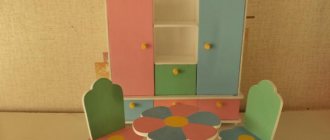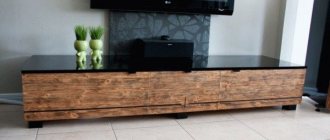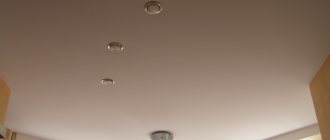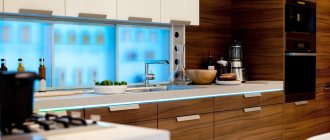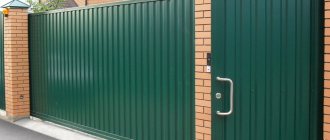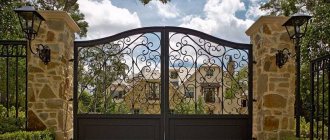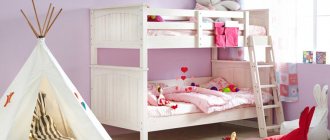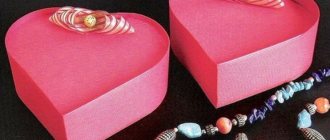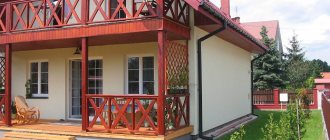Advantages and disadvantages of a fence
Among the advantages of this design:
- Wear resistance. The surface is treated with protective solutions, and the metal is not subject to corrosion.
- A light weight. Simplifies transportation and installation. No need to use special equipment.
- Assembling the fence does not take much time.
- Low price. Installing such a fence yourself will be cheaper than a similar one made of brick or stone.
- Perfectly protects the area from noise and dust.
- Fireproof and environmentally friendly raw materials.
- Does not require periodic maintenance or painting.
- Looks beautiful and goes well with other materials.
- The material is durable.
- Lasts a long time.
- To be repaired. A single element can be replaced without harm to the entire structure.
The material also has its disadvantages.
If they are not firmly attached to the joists, the sheets will begin to deform under the influence of strong winds.
If the protective coating is damaged, it is necessary to treat the areas with an anti-corrosion primer, otherwise rust will appear there over time.
Selection of corrugated sheets
The quality of the profiled sheets is a key factor in the durability of the fence.
Therefore, before purchasing, we recommend that you read the tips given in this article: “Which corrugated sheet is best to make a fence from.”
When calculating the amount of material, take into account the dimensions. Standard width - 1155 mm, working width - 1100 mm. The height is different, so it is selected individually. If necessary, they can cut off sheets of the required parameters for you.
What to make the frame from
When installing a fence in a dacha, the owners' priority is not only a long service life, but also a minimum cost of construction work.
For permanent fencing in the private sector, owners choose a metal frame; around small areas of land - a wooden one.
Let's look at the nuances of each type of material.
Rolled metal (profile pipe)
In combination with a profiled sheet, this option is the most optimal. The fence will be reliable and resistant to wind loads. Such a frame can be installed on estates on a slope, on uneven terrain.
Welding is used to connect elements. The sheets are screwed to the frame with self-tapping screws or rivets.
Before assembling all metal parts into one structure, it is recommended to treat them with an anti-corrosion primer and paint them.
For the choice of product and description of the technology, read the article: “Methods of painting a metal fence.”
Wooden (from timber)
An inexpensive option is to install a timber frame. It is a lattice. Logs are fixed across the vertically fixed pillars. This is done using nails, screws or a groove connection.
Wooden construction is inferior in strength and service life to metal, so it is chosen much less frequently.
Before installation, the elements are protected from moisture with antiseptics.
Installation of a fence with metal posts
To figure out how to make a fence from corrugated sheets with your own hands, you need to study the installation technology. This is a job that requires certain skills and knowledge. For those who decide to assemble a fence from corrugated sheets without welding, the best option would be to order a complete set of parts and elements for fastening. The kit necessarily includes instructions that describe the assembly process step-by-step with pictures and explanations.
Installation work for installing fencing
Do-it-yourself installation of a corrugated board fence involves a number of sequential operations with step-by-step installation:
- measuring the site, preparing a construction plan;
- familiarization with the instructions for assembling the fence, checking the correctness of the calculations and ordering materials;
- metal preparation;
- installation of support pillars;
- fastening of transverse and diagonal jumpers;
- installation of profiled sheets.
In addition to this list of works, work on assembling gates and wickets, installation of decorative and additional elements can be added to it. Before starting construction, it is recommended that you watch the video and carefully read the installation manual on the website of the prefabricated metal structures manufacturer.
Fencing the area with a metal fence
Metal preparation
When building a continuous fence from a metal profile, the preparation of metal comes down to several operations related to the sorting and marking of rolled sheets for panels and frame elements, fasteners.
It is recommended to inspect rolled metal before installation to identify defects and carry out preliminary markings. It is impossible to install sheet metal on slopes and slopes without cutting the elements to the size and shape of the slope.
Piles, cross members, fastening units and stops are sorted and prepared for installation:
- in metal structures, the availability of places for landing screws is checked;
- the completeness of the delivery is checked;
- the compliance of holes for bolted connections on demountable pile structures is checked;
- The number of additional elements on the fence is checked.
The photo shows a beautiful fence.
Fence on a summer cottage
Installation of pillars
In ready-made kits, pile structures of two halves are used as pillars. The lower part is a screw pile with blades for screwing into the ground, and the upper part is in the form of a profile pipe for attaching crossbars and corrugated sheets. We begin installing a fence with our own hands by marking the area. Further, the technology for installing supports provides:
- a pit 15-20 cm deep is opened under each support in order to install a support here;
- a pile is screwed into the ground;
- the upper part of the support is installed to the lower part using bolts;
- the signal cord is pulled;
- By turning the piles with the top part a quarter turn, half a turn or a full turn, the supports are leveled in height.
Installation diagram without the use of screw piles
When installing piles, it is important to maintain a vertical position. Particularly high demands are placed on supports for gates and wickets. Here it is best to use a laser level to control the position of the pillars.
Methods for installing spans
Installation can be continuous or sectional.
Solid
Covering the fence with corrugated sheets is done with an overlap. The structure visually appears to be a solid wall. The pillars are mounted in increments of 1.5 – 2.5 meters. You should not increase the distance, since you will have to take logs of greater thickness.
Photo: fence and gate with a gate made of corrugated sheets
The average height of the fence is 1.7 – 1.8 m. Sheets can be attached horizontally or vertically.
Material consumption is calculated as follows: the total length of the fence is divided by the working width of the sheet.
With this fastener, the consumption of sheets is much greater than with sectional ones.
Sectional
In this installation method, the spans are clearly distinguished.
Article: “Types of forged fences.”
The pillars are made from:
- bricks;
- stone;
- metal with forging elements;
- concrete blocks.
The recommended distance between supports is equal to the width of one or two sheets.
The number of pillars is determined by the number of sections.
How to build a fence from corrugated sheets
To calculate their capabilities, every owner of a plot of land is interested in knowing how much a fence made of corrugated board costs. First you need to decide on the height of the fence, then measure the perimeter of the site. Knowing the width of the material, its price, the length of the fence and making several mathematical calculations with these parameters, you will get the result - the required amount of material and its cost.
Fence made of beautiful gray profiled metal
There are two ways to install a fence: with and without a foundation. The second option significantly speeds up the workflow. But a fence made of corrugated board with a foundation is more reliable, and it looks respectable.
Two ways to install a fence: with and without a foundation
With all its advantages, corrugated sheeting is a simple material. Therefore, decorating this fence with decorative elements made of wood, brick or stone would be appropriate in this case. A good option would be, for example, a fence made of brick and corrugated board.
A fence made of corrugated sheets is an excellent solution for people who want to erect a fence on their site in the shortest possible time
Corrugated sheeting has a large windage. Therefore, the sheets must be mounted on vertical posts. These fencing elements are made from different materials. A fence made of corrugated board with brick pillars is considered an elite structure and has a respectable appearance. For such a fence, a reinforced concrete strip foundation is required.
A fence made from corrugated sheets is a feasible task that can be solved without the involvement of specialists
If we are talking about doing the work on our own, then it is better to choose a simpler option. For example, a fence made of corrugated sheets with pillars made of pipes. There is simple installation and a low price.
When buying profiled sheets, be sure to pay attention to the price - you should not save here
Fence made of corrugated sheets with edging for each section
Construction materials
Let's look at the requirements for each of them in more detail.
Profiled sheet
For fencing, it is recommended to take sheets C8 or C10, that is, with a wave height of 8-10 mm, a thickness of 0.5 mm.
The surface must be uniform, without scratches or paint streaks. Material with galvanized coating lasts up to 30 years, with polyester - up to 50 years or more.
A beautiful combination of brick pillars and corrugated sheets with a coating that imitates brickwork.
Sheets with a double-sided colored surface are available for sale. They are more expensive, but the fence will look equally neat both from the street side and from the yard.
Metal profile (for pillars and lintels)
A profiled pipe 50*50 mm is suitable for pillars. A good option for jumpers is a 40*20 mm pipe with a wall thickness of 1.5 mm.
Photo: square metal pipe
To simplify installation, it is better to buy ready-made poles of the required sizes. They do not have to be painted or cut into pieces.
Holder plates
This is the name given to the brackets. They are used when assembling the frame using hardware, without welded joints.
A simple way to calculate the number of plates: multiply the number of pillars by the number of rows of horizontal lintels.
Photo: X-bracket for fence
Pipe plugs (for supports)
Their main purpose is to protect the internal cavity of the metal support from moisture.
You can weld a metal cover of a suitable size. But it is much more practical to buy plastic plugs.
The quantity is equal to the number of supports.
End (fence) strip
It is customary to decorate the finished structure with it to give it a finished look. In addition, the upper ends of the sheets are protected from precipitation.
It has a U-shape. The edges of the plank must be rolled to avoid injury during installation and operation.
The strips are placed on top of the sheets in an even position with an overlap of 3 cm. They are fixed with rivets of the same color.
Self-tapping screws, rivets
Both types of hardware are used when installing corrugated sheets.
But experienced builders recommend sheathing the frame with sheets using roofing screws.
They have a neoprene rubber gasket that tightly presses the sectional material without harming the surface and prevents moisture from penetrating into the joints.
Photo: self-tapping screws for attaching sheets to joists
Average length - 15-35 cm.
Screwed in without pre-drilling holes. The consumption is much lower than with rivets, since the fixation is done in two outer waves on the sides of the sheet and through two more waves in the center of the sheet into each of the joists.
When installing the material with rivets, holes are drilled under them, which must be treated with an anti-corrosion primer. Consumption increases because the sheets are fixed at the corners and through each wave.
In addition, you will need an M6 bolt or screw.
For concreting
In order not to interrupt the technological process, it is important to prepare the components for the concrete solution in advance:
- sand;
- crushed stone;
- cement.
Crushed stone can be replaced with broken brick or stone.
If you need a large volume for pouring, order a ready-made concrete machine. This will reduce time and be cheaper than hiring several workers to knead.
Paint or primer
Required for painting pillars and cross beams. It is purchased depending on the material chosen for the frame - metal or wood.
Often the paint also has the properties of a primer, so you don’t have to buy a primer separately.
To get an unusual color, use the palette table shown on the packaging. Sometimes you just need to mix two shades.
Stages of fence construction
- Digging holes for supports is done with a garden drill. The depth of the pits is 1-1.5 m.
Installation of fence supports
- Installation and cementing of vertical posts (supports). The reliability and service life of the future fence depends on the quality of this stage. The supports are installed strictly vertically, which is checked by the building level. Next, the vertically installed supports are filled with concrete mortar, which should be pinned after pouring. The air remaining in the solution must come out. The foundation is left alone for three days.
Pouring the foundation for a corrugated fence
- Installation of transverse joists. These elements are installed parallel to each other, the outermost logs should be 20 cm away from the ground and the upper edge of the support. Using a welding machine, the logs are securely attached to the support pillars. If this is not possible, the logs are secured with bolts and nuts.
Installation of horizontal logs for corrugated sheets
- Fastening profiled sheets to a reliable frame. This stage starts from the gate. The verticality of each sheet is checked with a building level. One sheet is superimposed on another in just one wave. The sheets are attached to the joists only with self-tapping screws.
Fastening profiled sheets to a reliable frame
List of tools
Let's look at the requirements for each of them in more detail.
welding equipment
Will be needed to fix the joist to the posts. A 220 W household device operating from the network is suitable. To speed up the process, welding locations are pre-marked.
Photo: welding machine with chameleon mask
After the work is completed, the seams are cleaned, treated with anti-corrosion primer and painted.
If you don’t have the skills to operate the device, it’s better to invite an experienced neighbor or a craftsman.
If fastening is done with bolts and self-tapping screws, welding equipment is not needed.
Grinder (angle grinder)
Required for cutting metal parts and cleaning finished welds. You need to stock up on cutting and grinding wheels of suitable diameter.
Metal scissors
Metal scissors are used to cut corrugated sheets.
It is not recommended to cut sheets with a grinder, since the material overheats and the ends soon begin to rust.
Screwdriver
To fix the sheets to the frame, use a screwdriver with a special attachment for roofing screws - M8. During operation, the magnetic holder prevents the screw from falling.
Building level, plumb line and other tools
Among other things you will need:
- shovel or drill for digging a trench;
- concrete mixer (can be rented);
- tape measure, pencil (for measurements);
- building level;
- plumb line
Photo.
Plumb line - on the left, to measure the vertical position. The building level is on the right, used to measure the horizontal plane. When all the materials and tools are prepared, you can begin installing the structure.
Step-by-step instructions for creating a fence from corrugated sheets on a metal frame
All work can be completed by two or three people. On small sites there is no need to use special equipment.
Installation diagram, drawings
A sketch of the future fence is preliminarily developed. If it is difficult to do this yourself, then look for it on the Internet. There are many examples of ready-made structures made of corrugated sheets, located both on flat areas and on sloped estates.
Frame dimensions: pillars - metal pipe 60x60 mm, logs 40x20 mm. The distance between the pillars is 2500 mm. The height of the column is 3000 mm, of which 1200 mm is recessed into the ground. Sheet height 2000 mm,
The diagram should show the dimensions of the sections, the height of the pillars, the distance at which the logs will be attached.
The characteristics of the soil and the distance from the highway, green spaces, and outbuildings are indicated.
Elevation differences, if any, are shown schematically. The type of foundation is applied.
The requirements for materials are briefly indicated. Cost estimates are calculated.
Marking
Performed using rope and wooden pegs. The main pegs are driven into the ground at the locations of the pillars, auxiliary ones - every linear meter. A rope is pulled between them at a strictly 90 degree angle.
Foundation
Key factors when choosing the type of base:
- climate and soil features;
- depth of freezing and occurrence of groundwater;
- load on the foundation (whether the materials will be light or massive).
To familiarize yourself with the different types of foundations and study the stages of their construction, follow the link.
Installation and fixation of pillars occurs at the stage of foundation arrangement, regardless of the chosen foundation.
In this case, profile metal pipes are used under the supports.
Frame installation
Involves fastening the joists to the racks.
This is done in two ways:
- Welding. Using a grinder, cut pieces 5 mm smaller than the distance between the posts. The covering of the pillars is protected at the fastening point, and the old paint is removed. The procedure is performed by three people: two on the sides hold the vein, the third welds it. The seams are cleaned. Defects and poorly cooked areas are eliminated. The process is repeated around the entire perimeter. The finished frame is primed. After a day you can paint it.
- Fixed with brackets. The holder is installed on the pole at the desired level on the sides or outside, it all depends on the design of the plate. Fastened with self-tapping screws. The jumper is applied to another pillar. Another bracket is fixed according to the level. The process is repeated around the entire perimeter. The logs are mounted to the plates from the reverse side.
In fences with a height of 1.5 - 1.7 m, two joists are enough; with a larger value, the number of joists increases to three. The distance between the logs is 35 - 50 cm.
Methods of fastening corrugated sheets
Prepare sheets of the required sizes. Remove the protective film.
Photo: determining the verticality of the sheets using a building level
The further procedure of work is described in this article: “How to screw a corrugated sheet onto a fence.”
Installation of gates and wickets
When the covering of the sections is completed, you should begin installing gates and wickets. Reinforced posts with a wall thickness of 3.5 mm or more are chosen for the gates. Garage canopies are welded to them. For logs, pipes with a cross section of 20*40 mm and a wall thickness of 2 mm are used. All connections are made by welding. The locking mechanisms are secured against fixing the sheets.
The sheets are installed to the frame in the same order as in the case of sections.
Users often search for:
- Gate for metal fence
- Do-it-yourself wooden gate for a fence
Basic parameters of corrugated sheets for fencing
Installation of profiled sheets can be carried out both vertically and horizontally, the strength of the structure does not change. The main indicator that determines the reliability of a fence made of corrugated sheets is the height of the wave; at low levels, the wind load on the sheet is maximum, while a high wave allows it to withstand heavy loads. If you need a strong, stable fence, then it must be installed on a foundation.
When choosing which corrugated sheeting is best for a fence, it is worth considering that all its types are made from sheets 125 cm wide. To obtain waves, the sheets are rolled cold using special equipment; at the maximum height of the wave, the width of the finished sheet is minimal.
Most often, a profile for a fence is chosen with a wave height of 8, 10, 21 mm. The latter indicators will provide greater structural rigidity.
Standard height of a fence made of corrugated sheets Source zen.yandex.ru
It is only important to correctly install the supports, not forgetting that a fence made of corrugated sheets differs from other types in having a very large windage. If for a picket fence or forged spans the pillars can simply be buried and reinforced with stone backfill, then under the corrugated sheeting they must be buried to a depth greater than the freezing of the soil and concreted.
One should not lose sight of the fact that a fence made of corrugated sheets is a single monolithic structure and damage to one part of it can lead to deformation of neighboring ones. When installing a fence made of corrugated board, expect that it will last for many years, so do not plant trees with a large height and trunk thickness close to it - as they grow, they can damage the corrugated sheet. It is better to plant shrubs along the fence or leave a strip of lawn about a meter wide.
Installation diagram of a fence made of corrugated sheets Source tsb.com.ru
Features of installing fencing on a slope
For areas located on slopes in uneven terrain, it is important to develop the project in such a way as to compensate for sudden changes in elevation.
The optimal type of foundation for this would be a strip foundation.
Study in detail the types of tape and the sequence of filling.
The deviation must be uniform. Sections are created with the same lifting and lowering heights.
The fence is mounted in two ways:
- Repeating the slope contour. Performed on steep hills and slopes. The jumpers are fixed not horizontally, but parallel to the slope. Sections may be of different heights, but the same top level is maintained.
- Stepped fence. Suitable for estates with a gradual difference in height. Gives the fence an aesthetic appearance. The pillars are mounted in steps of 2-2.5 m, so that transverse joists can be secured between them. The average drop height per section is the total drop height of the section divided by the number of drops between the pillars.
When the differences in ground level are less than the depth, it will be easier to build a foundation for a fence on a slope. The concrete base of the base is made in the form of steps, the top is parallel to the ground.
Transverse logs for a fence made of corrugated sheets
The logs can be made of a profile pipe with a cross-section of 30 by 20 or 40 by 20 mm, or from a wooden beam of approximately 70 by 40 mm. Metal, of course, is preferable, since wood is more susceptible to rotting, especially at fastening points, and has a shorter service life.
If you are installing a metal profile fence with your own hands using wooden logs, do not skimp on a good wood impregnation, which it is advisable to apply several times. Ideally, you can immerse wooden joists in a bath with an antibacterial solution, for example, Senezh Ultra, and soak in the solution for 20-25 minutes, and then dry thoroughly.
The number of logs directly depends on the height of the fence. If the fence is no more than 2 meters, then two transverse joists are enough. If the fence is from 2 to 3 meters, then install 3 logs. Anything over 3 meters needs at least 4 joists.
Photo gallery of finished fencing
Below are different ways of fastening corrugated sheeting to a fence, the most original combinations with other materials.
To create a reliable fence yourself, corrugated board is a universal material and a good choice. The finished structure will perfectly complement the site, protect the yard from curious neighbors, and the variety of colors will allow you to purchase a material that will definitely suit any owner.
